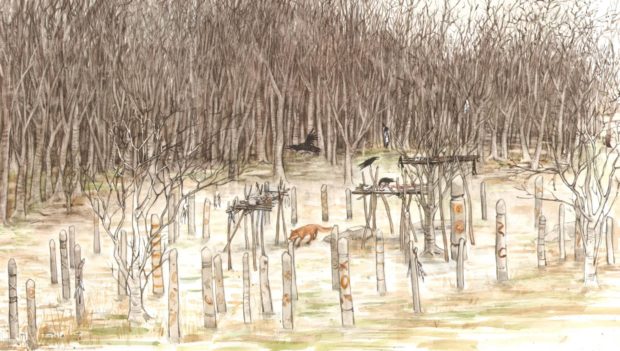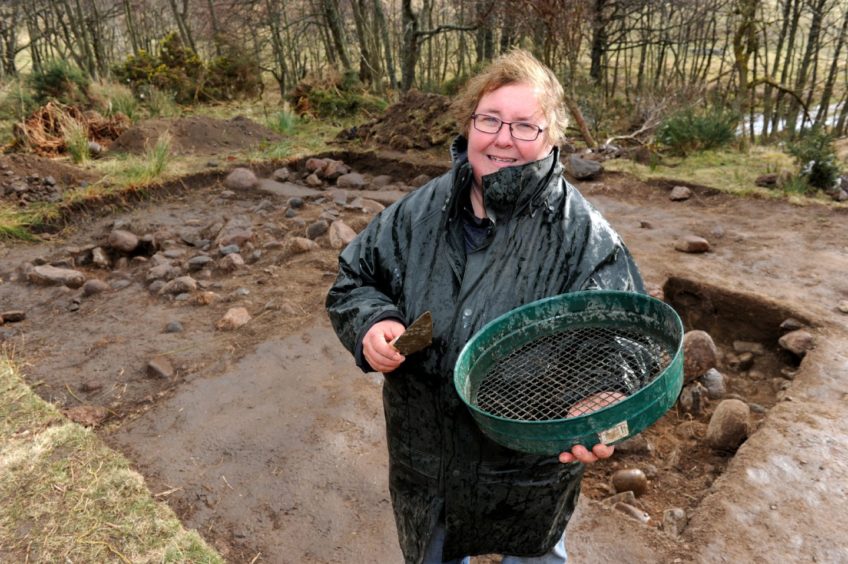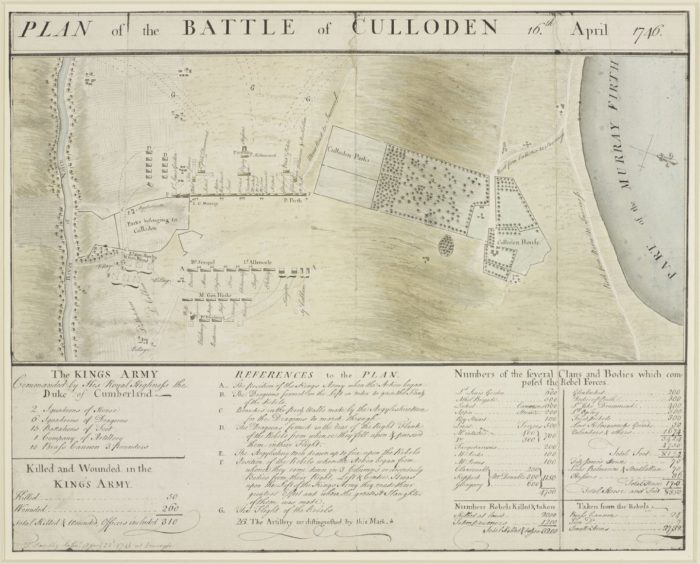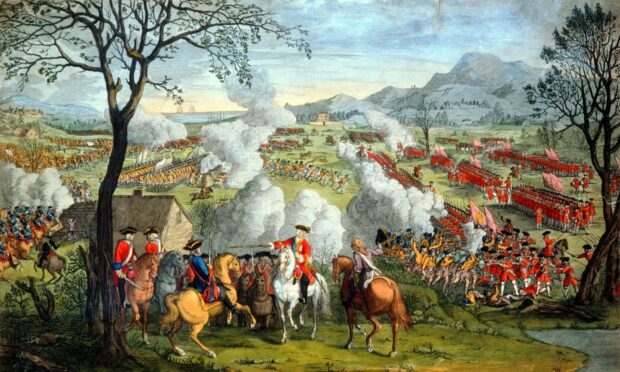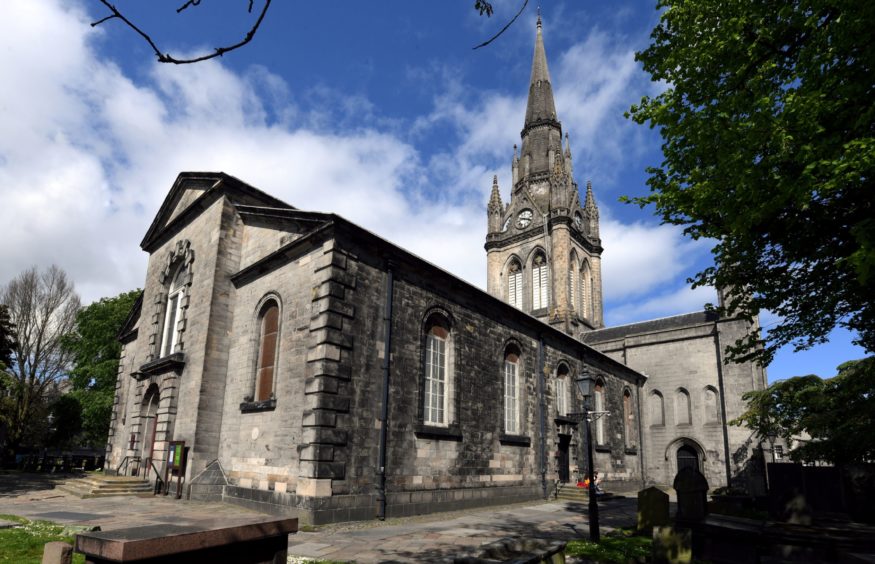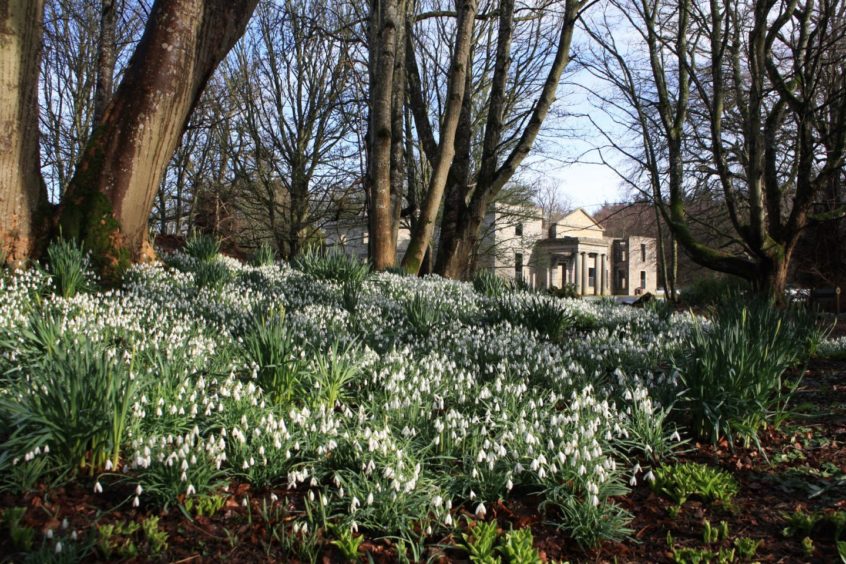Quietly, methodically, they have been working in remote locations and searching for clues to Scotland’s secret past.
Now, north-east archaeologists have unearthed another fascinating discovery from their labours at Aden Country Park in Aberdeenshire.
Their finding of a large Neolithic enclosure, which contained a medieval chapel, has raised the question of whether William, Duke of Cumberland and his troops destroyed the building as part of their preparations for the Battle of Culloden in 1746.
Ali Cameron, who has been involved in a series of excavations throughout Aberdeen and Aberdeenshire for the last 30 years told us about this latest development – which she described as “amazing” – and confirmed that work will resume at the site from August 17 to 28.
She and her colleagues will be joined by 25 Aberdeen University archaeology students, in addition to local and national volunteers, and an open day has been planned for Saturday August 21, which will feature some of the myriad arcane artefacts found at Aden in recent years.
The possibility that the Duke of Cumberland – who was notoriously nicknamed “Butcher” by his critics – might have been involved in the destruction of a religious building in Aberdeenshire is being explored by the archaeological team.
After travelling to Edinburgh in January 1746, he journeyed north to begin the task of hunting down the Jacobite forces, led by Bonnie Prince Charlie.
It’s known that he spent more than two months in and around the city training the well-equipped forces who were now under his command for the next stage of the conflict.
On April 8, he left Aberdeen en route to Inverness, and, on April 16, fought the decisive Battle of Culloden, in which the Stuart forces were completely destroyed.
Cumberland ordered his troops to show no quarter against any remaining Jacobite rebels.
When Cumberland learned that a wounded soldier lying at his feet belonged to the opposing cause, he instructed a major to shoot him; when the major, James Wolfe, refused to do so, Cumberland commanded a private soldier to complete the deed.
The British Army then embarked upon the so-called ‘pacification’ of Jacobite areas of the Highlands.
All those of the troops believed to be ‘rebels’ were killed, as were non-combatants; ‘rebellious’ settlements were burned and livestock was confiscated on a large scale and more than a hundred Jacobites were hanged.
Women were imprisoned, and droves of people were sent by ship to London for trial; but, because the journey took up to eight months, many of them died on the way.
Events from that grim period 275 years ago still have a resonance across Scotland, yet there is little information about the Duke of Cumberland’s actions in the Granite City, which helps to explain why the findings at Aden have raised interest in this old mystery.
Ali said: “The Neolithic enclosure is an amazing find – an oval of post-holes at least 25m long and 12.5m wide – and we have an artist’s impression of what it might have been like, which was produced by Jan Dunbar.
“There is a T-shaped building that local dog walkers found in a wood at Aden and asked me to put some trenches in.
“We quickly realised that this is a very interesting, unrecorded and unmapped building, and there was a rectangular building nearby.
“Excavation has shown that it is probably a 1600s chapel which was built by the Keith family who owned the Aden estate at that time.
“It had stained glass windows, five doors and probably a thatch roof. We found three spectacles and more than 20 coins in the floor levels.
“There was burnt wood on the floor, suggesting it had been burnt down in the mid-1700s.
“Was this the chapel which was burnt down by the Duke of Cumberland’s troops in 1746?
“We are continuing uncovering the rectangular building which was probably the associated farm buildings.
“The T-shaped building has been stabilised and we will be doing tours of both of the buildings in the future.”
Organisations in the region have been thrilled by the realisation that Aden Country Park is replete with archaeological sites of all periods and archaeologists have been mapping and analysing them to understand what they are and when they date from.
Ever since the 1980s, when she arrived in the Granite City, Ali has been delving into the past with a fervent curiosity and desire to learn more about the intriguing history of the generations of different people who lived, loved, married, prayed, pursued different trades and died throughout the north east.
It’s a crusade that has seen her involved in large urban digs, such as a meticulous excavation at St Nicholas Kirk and Marischal College in Aberdeen, and also make discoveries at more isolated locations in Moray, Aberdeenshire, Angus and Tayside.
Yet, while many of her endeavours have provided exciting revelations, she never forgets that she is dealing with humans from the past, who deserve to be treated with respect even though they died centuries or even millennia ago.
Ali spoke poignantly about one such encounter at Marischal College and it’s obvious she has never forgotten the sight of the bodies of “seven monks who were excavated still with their hands clasped in prayer after 500 years in the ground”.
There can be Eureka moments at digs
She added: “It’s often a gradual process because we have to patiently wait to get samples processed and dated thereafter.
“But there are what you might call ‘Eureka‘ moments, such as happened in 2018 at Deer Abbey when we were searching for the monastery and my colleague, Jan Dunbar, came up to me with her hand behind her back and brought out a beautiful circular stone with scratches on it.
“We knew that it was a gaming board and was medieval in date and that it would have been used for a game like chess or 9 Men’s Morris – Hnefatafl.
“The story went round the world and we were being filmed, which was amazing. We have since found that another stone from the site was also scratched into a gaming board, but I didn’t see this until I took the finds home and cleaned them.”
Ali has urged anybody with an interest in archaeology or history to attend the open day event, which has been organised with the backing of Aberdeenshire Council, Historic Environment Scotland, the Heritage Fund and Friends of Aden Country Park.
She said: “Archaeologists have been very inventive during the pandemic – creating Lockdown YouTube channels, recording talks, walks and events as well as podcasts and doing archaeological projects within their lockdown area.
“People have been attending talks in their hundreds and then asking to come along to an excavation.
“Aden has definitely benefited from this and we have had inquiries from many local people who want to come on the dig for a day.
“Often, they come for the day and stay for the whole dig or course. Many of them don’t want to take a formal course, but there are lots of great ones which you can study in your own time and at a distance.
“And there are so many great archaeology books and magazines – Current Archaeology, for example – which are popular with amateurs and professionals alike.”
The world has changed in many ways during the last 18 months. But even as we grapple with the future, it seems many people are still fascinated by the past.
Contact Ali Cameron on cameronarch@btinternet.com for more information on the archaeology projects mentioned.
